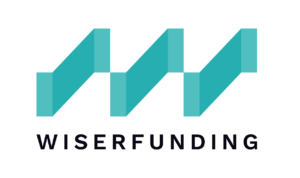The Future of Private Credit Markets
Wiserfunding recently organised an event along with our partners at CARDO AI, bringing together lending industry experts and thought leaders to discuss the state of the private credit market. We would like to extend a special thank you to our panel of speakers who shared their valuable insights – from credit risk assessment to the role of technology and ESG in credit markets.
Summary
- While credit markets are still healthy, the credit cycle has downgraded from a ‘benign’ to an ‘average’ phase
- Default rates remain lower than average, but increasing distressed ratios and worsening default forecasts indicate potential trouble ahead
- Private debt is projected to reach a historic high of $2.2 trillion by 2027, posing a large potential risk for policymakers and market participants
- Maintaining long-term relationships with clients and borrowers is crucial to navigating through potential turmoil
- Lenders should expect a higher level of risk and should be prepared to deal with defaults and other negative outcomes
A shift in the credit cycle
Speaker: Prof. Ed Altman, co-founder of Wiserfunding
The past year has witnessed a series of tumultuous macroeconomic indicators: rising inflation, slowing economic growth, and increasing interest rates chief among them. These changes have posed the question to financial leaders: where are we in the credit cycle?
“The credit cycle is currently in a mostly average state, but it has reached an inflection point from benign to average credit risk”, Prof Altman explained. While defaults are still low and below historic averages, there are leading indicators of increased market stress that have caused the inflection point.
Key Factors in Debt Markets
Positive factors indicating a status quo, healthy bond market
- Bond defaults are still low and much lower than historical averages, and recoveries are still above average
- Year-to-date losses for U.S. High Yield (HY) Bonds are at about -11%, compared to about -20% for the S&P 500, indicating the high-yield bond market has not been hit as hard as the equity market during the recent market downturn
Negative factors indicating an increasingly risky market
- Distressed ratios for High-yield bonds spiked from 2% to 9% between 2021 and late 2022, indicating increased stress in high-risk debt
- High-yield “junk” bond yields hit a relative high since early in the pandemic while the spread on risky CCC corporate bonds over US T-Bonds have grown to a recent high, reflecting investors’ perception of increasing risk from private debt
- New issuances for US high-yield bonds has decreased 77% from 2021’s peak, demonstrating that lenders are finding it more challenging to find liquidity
- Corporate Z-Scores (a composite risk measure) have dropped significantly in the past 3 years, indicating a higher probability of default
- Consensus forecasts for bond defaults are rising in 2023 and into 2024From a credit risk perspective, this development is hugely significant for several reasons.First, high levels of private debt can pose a risk to financial stability. If borrowers are unable to repay their debts, this can lead to defaults, which can have ripple effects throughout the financial system. Rising defaults can trigger a contraction in new issuances as lenders exercise greater caution, which lowers the amount of new capital flowing throughout the economy and dampens economic growth.Secondly – and somewhat counterintuitively – high levels of private debt can sometimes constrain borrowers’ the ability to invest and grow. When companies are burdened with debt, they may be less willing or able to invest in expansionary projects because of changes in their risk appetite or interest repayment burdens. In turn, their reduced appetite for expansion can negatively impact employment and overall economic growth.Third, high levels of private debt can increase borrowers’ vulnerability to economic shocks. When economic conditions deteriorate, companies and individuals with high levels of debt may be more likely to default, which can exacerbate economic downturns.
The projected increase in private debt is a significant issue that policymakers and market participants should pay close attention to, as it has implications for financial stability, economic growth, and the welfare of individuals and businesses.
What now?
The outlook for 2023 is rising default rates and a spike in 2024, possibly due to a recession. Lenders should expect a higher level of risk in the market and should be prepared to deal with defaults and other negative outcomes. Despite these concerns, the credit cycle is still in a relatively healthy state. As ever, it is increasingly important for lenders to remain vigilant and focus on maintaining underwriting standards to avoid a potential crisis.
Historic highs for private debt
Speaker: Altin Kadreja, CEO of CARDO AI
In the past decade, private debt and non-bank lending have become increasingly popular forms of financing within global financial markets. And it’s showing no signs of stopping: by 2027, private debt projected to reach $2.2 trillion in AUM.

From a credit risk perspective, this development is hugely significant for several reasons.
First, high levels of private debt can pose a risk to financial stability. If borrowers are unable to repay their debts, this can lead to defaults, which can have ripple effects throughout the financial system. Rising defaults can trigger a contraction in new issuances as lenders exercise greater caution, which lowers the amount of new capital flowing throughout the economy and dampens economic growth.
Secondly – and somewhat counterintuitively – high levels of private debt can sometimes constrain borrowers’ the ability to invest and grow. When companies are burdened with debt, they may be less willing or able to invest in expansionary projects because of changes in their risk appetite or interest repayment burdens. In turn, their reduced appetite for expansion can negatively impact employment and overall economic growth.
Third, high levels of private debt can increase borrowers’ vulnerability to economic shocks. When economic conditions deteriorate, companies and individuals with high levels of debt may be more likely to default, which can exacerbate economic downturns.
The projected increase in private debt is a significant issue that policymakers and market participants should pay close attention to, as it has implications for financial stability, economic growth, and the welfare of individuals and businesses.
Fireside Chat: Strategies for Driving Growth in Private Credit
Speakers: Patricia Lando, Head of Capital Markets at Fasanara Capital & Altin Kadareja, CEO at CARDO AI
Despite worsening credit indicators, it is not enough for lenders to simply exercise more caution. In a fireside chat, Patricia Lando and Altin Kadareja discussed how private lenders can build successful growth strategies that mitigate risk during deteriorating phases in the cycle.
While the credit world is driven by a plethora of quantitative variables, the critical pillar of any asset manager’s strategy needs to be qualitative: strengthening relationships. Robust networks with deep relationships drive a variety of successful downstream outcomes.
With long sales cycles and high acquisition costs, relationship-building ensures a higher likelihood of conversion and lifetime retention. As many lenders have noted, not only do these relationships drive greater topline, but also enable deeper understandings of business risk profiles. Together, these inputs enable improved returns and stronger brand awareness – indicators that attract investors and borrowers over time to grow AUM.
Beyond individual clients, developing networks with platforms and borrowers helps asset managers “gain access to a steady stream of high-quality deals that meet their investment criteria,” Lando explained. Network-based approached expand deal pipelines while keeping a pulse on the evolving trends and needs amongst borrowers. “The next chapter in driving growth will mean anticipating change and evolving for the future,” Lando said.
Empowering smarter, faster lending
When the credit cycle is shifting, there is no better moment to strengthen the efficiency and precision of your credit risk management approach. At Wiserfunding, we’re building the future of SME credit intelligence to empower faster, smarter lending throughout the lending lifecycle in any credit environment. Follow the link to get in touch and learn more.
SIMILAR POSTS

12 July 2022
Resilience is the new normal
How to proactively manage a lending portfolio in uncertain times We analysed a random sample of 1,820 SMEs across multiple [...]

12 April 2022
What We’ve Heard and What We’ve Been Building
What We Have Learned All our clients share a common goal; they need accurate, independent, and reliable insights into SMEs’ credit risk. [...]

24 March 2022
Weak business models to blame for the collapse of UK energy providers
This week, we released research into the UK energy sector, which highlighted systemic shortcomings in the assessment of dozens of [...]



